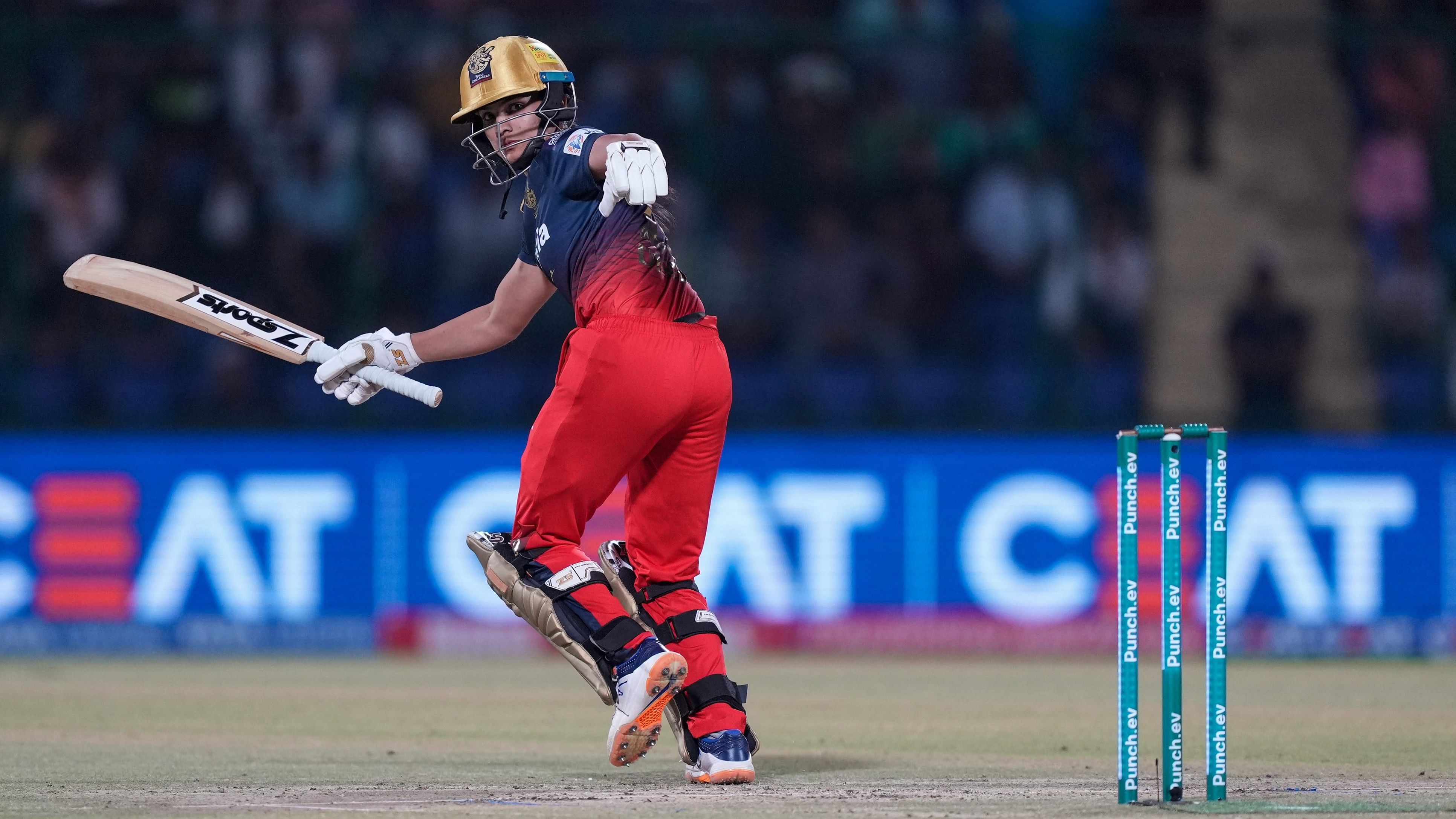
Royal Challengers Bangalore batter Disha Kasat plays a shot during the Women's Premier League (WPL) 2024 cricket match between Mumbai Indians and Royal Challengers Bangalore.
Credit: PT
Bengaluru: Shafali Verma shimmied down the track and deposited off-spinner Ashleigh Gardner's slot-ball on the off-stump 91 metres over wide long-on for a six, the longest of this year's Women's Premier League.
That nearly 20 seconds of explosive moment underlined the fast-evolving landscape of women's cricket -- the increasing infiltration of power and fitness.
But it has also accentuated the talk about the possibility of stretching the boundary perimeter similar to that in men's cricket.
"Yeah, we have seen some big sixes getting hit this year in the WPL, and a lot of chat is going on about pushing back the boundary lines (in the tournament). The increasing power limit of players is obvious, thanks to their focus on fitness."
"But for that (increasing the length of boundary), detailed discussion with players, coaches etc is needed as ultimately, they have the biggest say in matters related to playing conditions," a BCCI official told PTI on condition of anonymity.
Irrespective of the future course of action, there is a lot of merit in the argument to standardise the boundary size in women's and men's cricket, considering the players' increasing ability to clear the ropes.
The WPL 2023 saw a total of 159 sixes, whereas there were 168 maximums a year later and Indian batters biffed 98 of them.
Former India player Mamtha Maben gave an explanation.
"What I have seen is the step-up by domestic (Indian) players in terms of fitness and power. It reflected in their batting and fielding. I saw a few of them hammering big sixes."
"There is some more road to travel but there is a marked improvement from last year to this year in their performance, regardless of the boundary size," Maben, now a consultant with Namibia women's cricket team, told PTI.
A deep dive into the dimensions of the M Chinnaswamy Stadium and Arun Jaitley Stadium, venues where WPL 2024 was played, is necessary to see the finer points.
The normal boundary lengths at the Chinnaswamy, where the first part of this iteration of WPL was held, are 64-63m on the square of the wicket, 76-68m in the ‘V’ towards the media box while 56m on either flank behind the wicketkeeper.
But during the WPL, the shortest boundary mark was shrunk to 47 metres, and it had made the task of captains harder as batters comfortably cleared that distance.
It became doubly difficult to contain left-handers when they batted from that end as even a small dab or tuck could make the ball race to the fence on the quick Bengaluru outfield.
Delhi Capitals captain Meg Lanning stressed on that point.
"It is a nightmare having a 40-metre boundary on one side. That is one thing I haven't necessarily enjoyed as a captain."
"We could look at potentially having slightly bigger boundaries. If it is even all the way around, that makes sense," Lanning had said ahead of the WPL final against Royal Challengers Bangalore.
Lanning admitted that the left-handers would have a natural edge with a shorter boundary on one side of the ground.
"There's so much more power and strength in the game now that people are clearing the ropes easily. I have lost a lot of sleep when there's only a 40-metre boundary on one side, especially when there's left-handers like Smriti," said the Australian.
But the scenario saw a slight improvement during the title clash at the Arun Jaitley Stadium as the use of pitch No. 5 ensured a rather equal allocation of distance.
The square boundaries measured 55 metres, while the ‘V’ in front of the wicket had a length of 65 metres.
The 'V' behind the square was the shortest at 49 metres, and RCB captain Smriti Mandhana admitted that planning became easier on grounds with uniform boundary size.
"There's a lot of planning that goes on when the boundary length is 40 metres on one side. I feel it is a lot of headache than having a similar size of boundary."
"When left-right batters were playing, it was a nightmare to understand which end to bowl your spinners or pacers from," said Mandhana.
Maben echoed those sentiments.
"More power-hitters will be present in women's cricket in future with the kind of work players and the BCCI are putting in."
"It's imperative that a sit-down will happen sooner than later to discuss about keeping this sport future ready," she said.